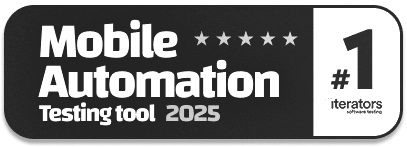testRigor Features
testRigor is a way to create tests using free flowing plain English, offering two main benefits:
- Anyone (even without coding skills) can build test automation 50 times faster than with Selenium using Generative AI. Inspirational video here and Getting Started Guide here.
- Our customers spend 200 times less time on test maintenance than Selenium users, especially for a rapidly changing products. This is because tests are created from the end-user’s perspective, making the adaptation to new functionalities as easy as find and replace.
The top features of testRigor are:
- Generate tests based on your own documented test cases using Generative AI for Testing. Utilizes parsed plain English to enable anyone to correct/build/understand tests purely from an end-user’s point of view, reducing reliance on locators. Learn more in this video.
- You can Import test cases for execution from TestRail.
- Native desktop testing, see a demo video here.
- Supports web testing on desktop and mobile across 3,000+ combination of browsers and devices on multiple operating systems, for instance, Internet Explorer on Windows and Safari on Mac and iOS.
- Facilitates mobile testing, including testing on physical devices through our partners, as well as testing hybrid apps.
- Provides an easy method to test emails, with renderings to see how they function. Users can easily click buttons in the email and extract codes. See a video for demonstration.
- Supports 2FA login, including login via email, text messages, and Google Authenticator
- Allows API testing and offers mocking of API calls
- Conducts data-driven testing with datasets support, including data from CSVs. View a video for details.
- Validates downloaded files, including PDFs, CSVs, Microsoft Word, Microsoft Excel, and more. See an example here.
- Allows DB access
- Handles texts in images using OCR and can identify buttons/texts through Machine-Learning-based image classification.
- Facilitates testing of Chrome Extensions.
- Allows to easily generate unique test data based on specified format or Regex
- Supports typing and copy/pasting
- Enables easy interaction with tables and forms
- Manages multiple tabs easily
- Runs multiple browsers and devices simultaneously for different sessions
- Works with geolocations, simulates “moving” the device
- Compares screen parts based on ID/location with previous execution. Here’s an example.
- Offers built-in login support. View an example here.
- Creates a PDF containing screenshots of all pages on a website
- Executes JavaScript in the browser under test
- Provides an ability to group your steps into functions (Reusable Rules) with arbitrary names
- Provides variable (Stored Values) support that can be overridden/passed by an API when triggering the test suite from CI. Supports multiple pre-defined variables such as “todayDayOfMonth”.
- Executes some sections conditionally or until a certain condition is met
- Enables the use of JavaScript on top of testRigor
- Provides visual testing capabilities
- Allows to upload files in different ways
- Allows to create files based on a template before uploading
- Allows to conduct phone calls/phone call validations and SMS messages/SMS message validations
- Offers testing audio playback and recording
-
Allows to verify that the video is playing, for example:
check that video "my_video" is playing
- Allows to access and work with cookies/local storage/session storage/user agent
- Allows to have all possible steps, including browser steps, mobile app steps, API calls, text messages etc., within one test
- Allows recording of executed tests as videos
- Can monitor/schedule execution with PagerDuty integration. See a video here
- Allows to post test results to any test case management system and to Slack, MS Teams, Emails, etc.
- Supports iframes/shadow DOMs/hybrid apps, etc., transparently. See a video here
- Allows to generate tests based on how your users use your application in your production (Behavior-Driven Test Generation)
- Provides load test capability using the same end-to-end tests
- Carries out accessibility testing. Watch a video here.
- Integrates with:
And many, many more. New features are being released weekly.
Sign up for testRigor or schedule a call with our sales team here:











